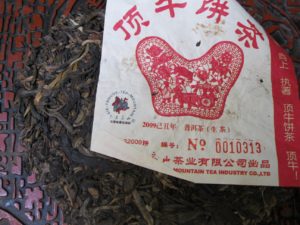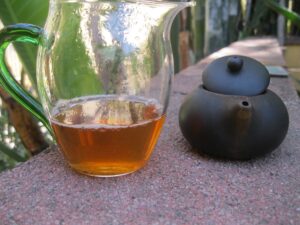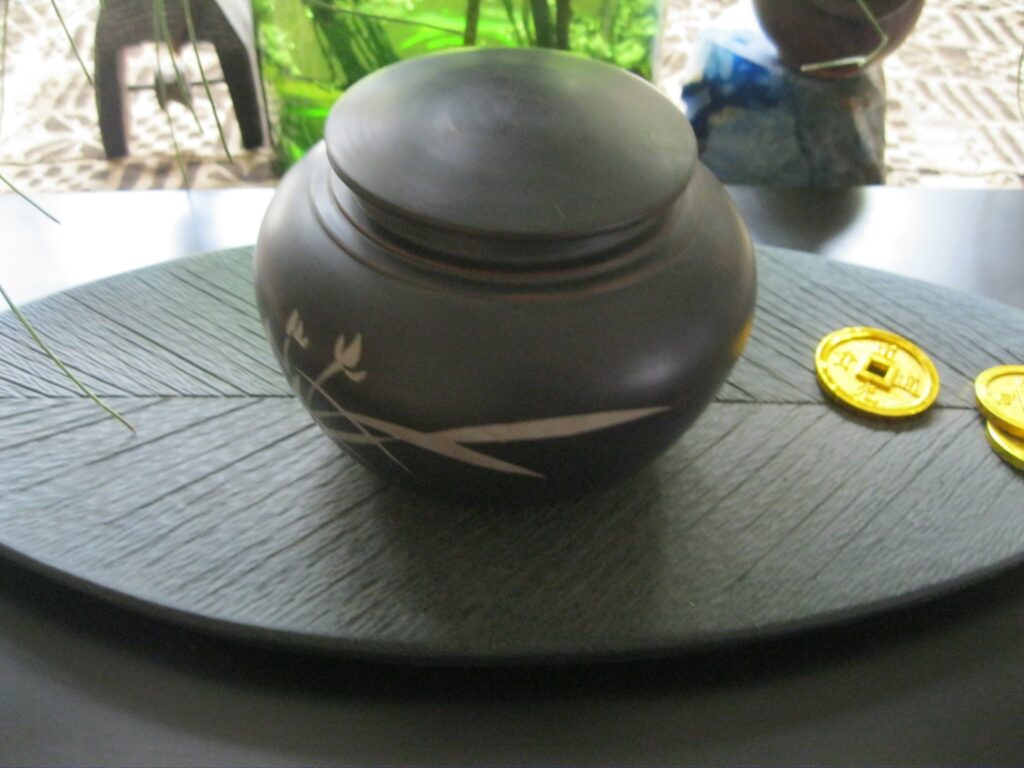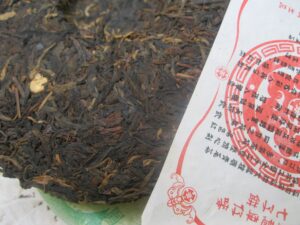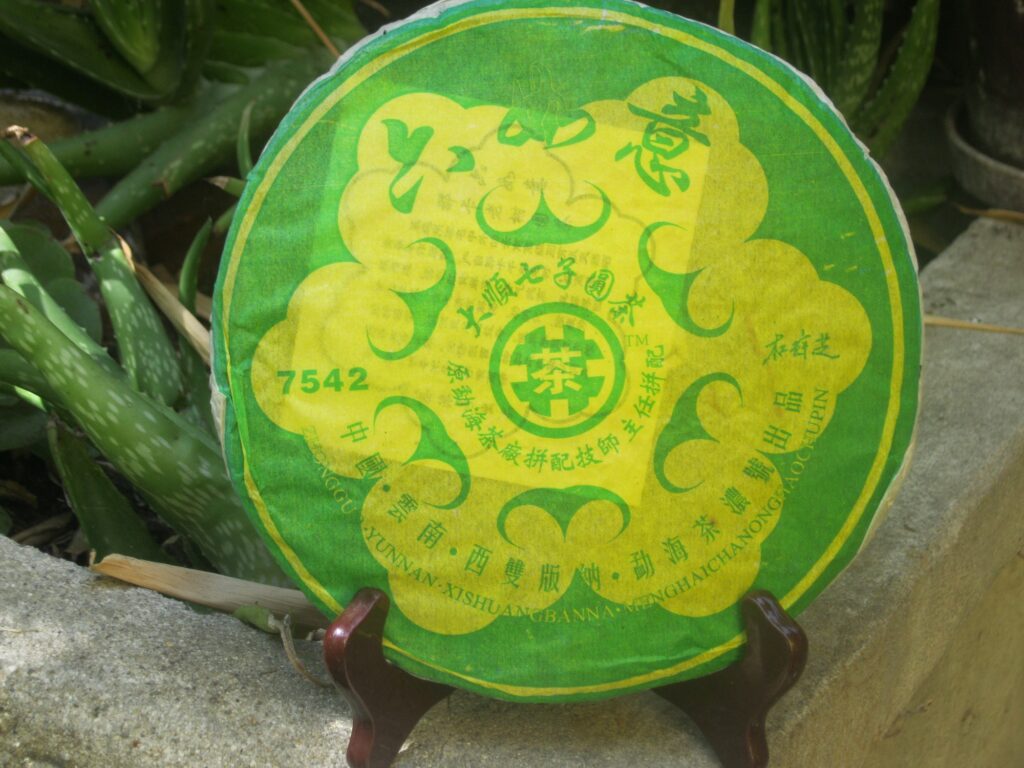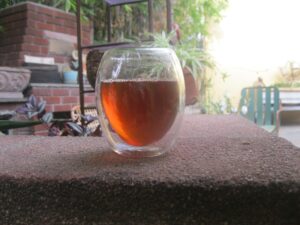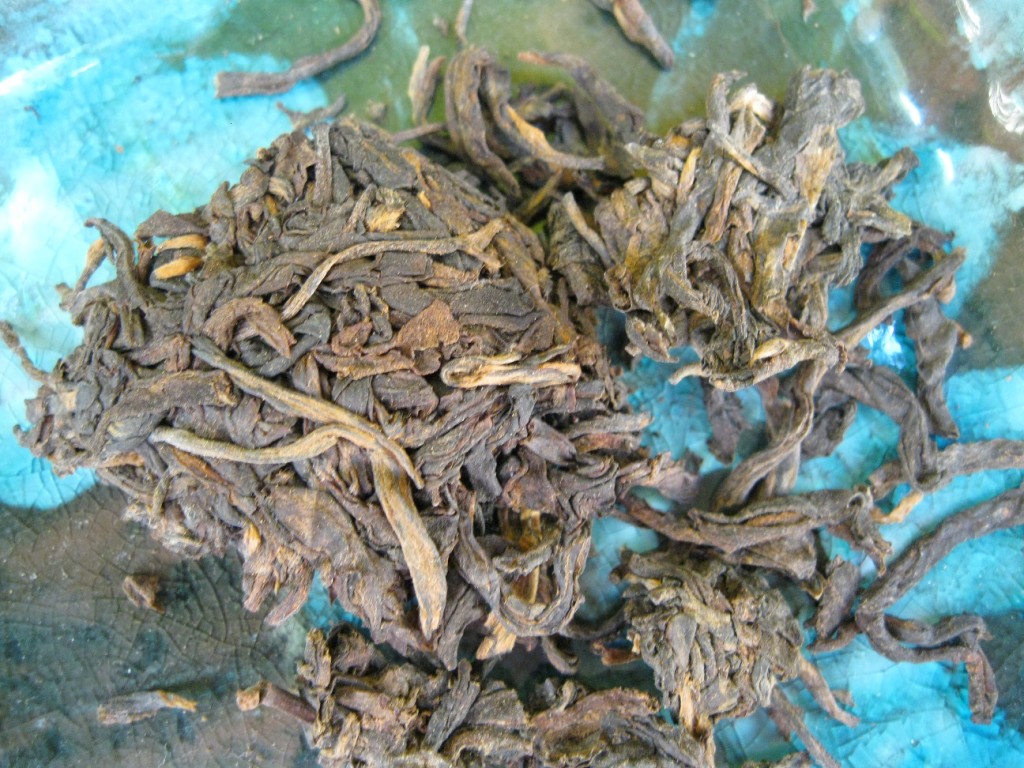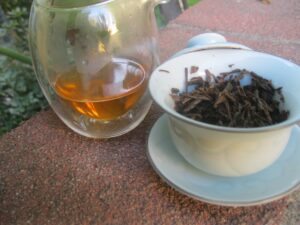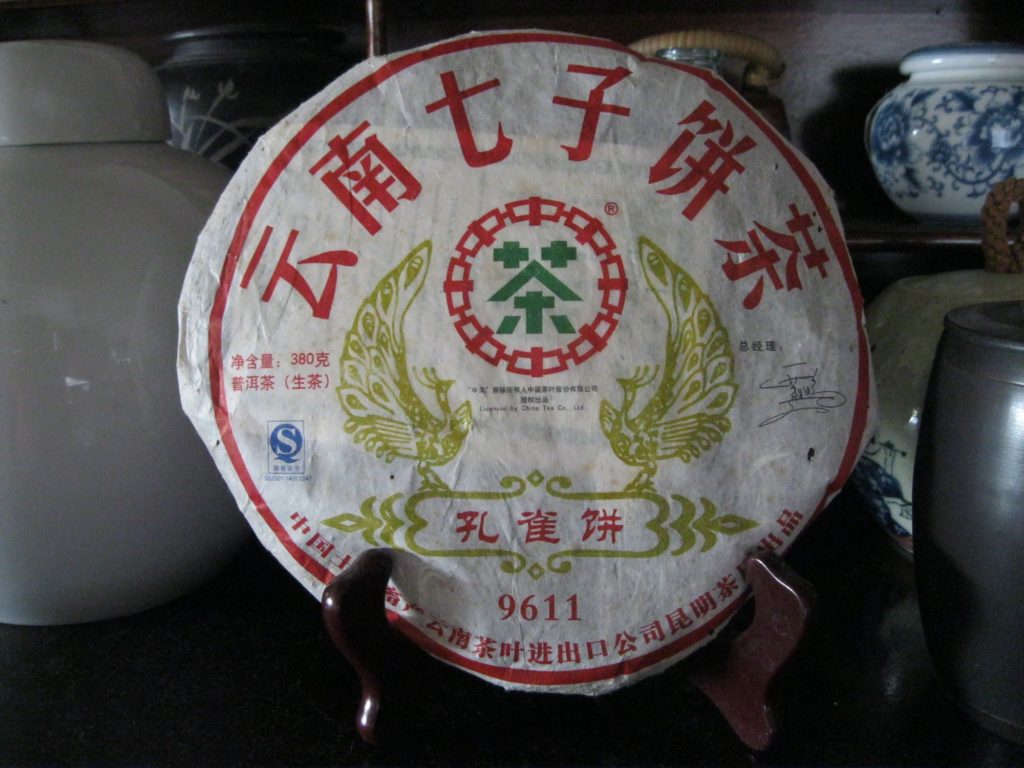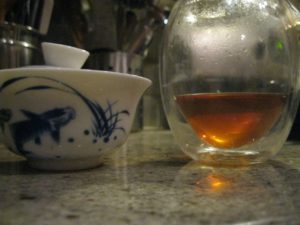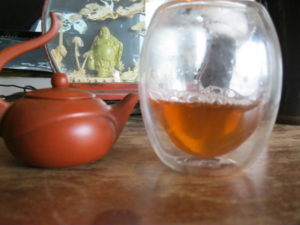Ox, 6FTM Follow Up
Ox, 6FTM Follow Up finds the Puerh Junky serving it up for a visitor impressed by the neifei image posted on Instagram. If you’re asking yourself, “What?!!! Ox, 6FKNTM again?!!” Don’t worry. This post won’t be long.
Just two days ago, the official Puerh Junky Visits Report (PJVR) noted a few things that make the Ox different from the past. These were sweetness, flawless clarity, and no qi of note. Hmmm. Hold the presses. After two or three days of sitting out of storage, all three of these variables changed. Still, 5.5g in slow-pour zisha, 150ml.
The rinse. Sparkling clarity and lively taste. Light liquor colour. I took one cup and saved the rest to cool, splitting it when the guest arrived. She didn’t taste much, but I could sense the qi already.
The next infusion went strait to my head and our visitor poured sweat: head, arms, and legs. “I feel like I’m in Miami,” she said. I hand her the box of kleenex. She’s not impressed with the taste which she feels is mottled compared to say the BZ Peacock (coffee) or the Fujin Green. To me it’s great and the huigan is bangin’. Clear broth, about a four out of five.
Next infusion is more intense and she warms up to the taste. All infusions are “flashed” but again, it’s the slow-pour pot. The huigan excels. Mouth full of roses. The ole Fengqing attribute stands out as it has customarily. There is zero sweetness to speak of. Clarity about the same. The qi is working full force in my head, though it is sedating the guest.
The next infusion is a catastrophe in terms of clarity, a one. Guest appreciates the building intensity, but her eyes are starting to roll to the back of her head. I’m holding my head very still to keep by brains from rattling in the noggin. Again zero sweetness but explosive huigan that those craving tippy productions seek.
Tap out.
The difference two days out of storage makes. . . Puerh Junky preferred the experience earlier in the week, but the contrast is quite instructive. On this 13 Aug ’22, it tasted every bit its age, whereas earlier it tasted about seven years older.


